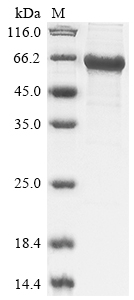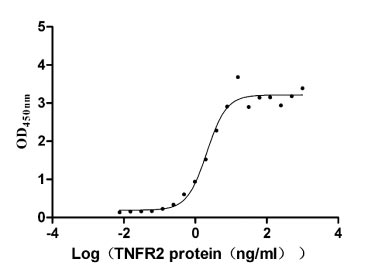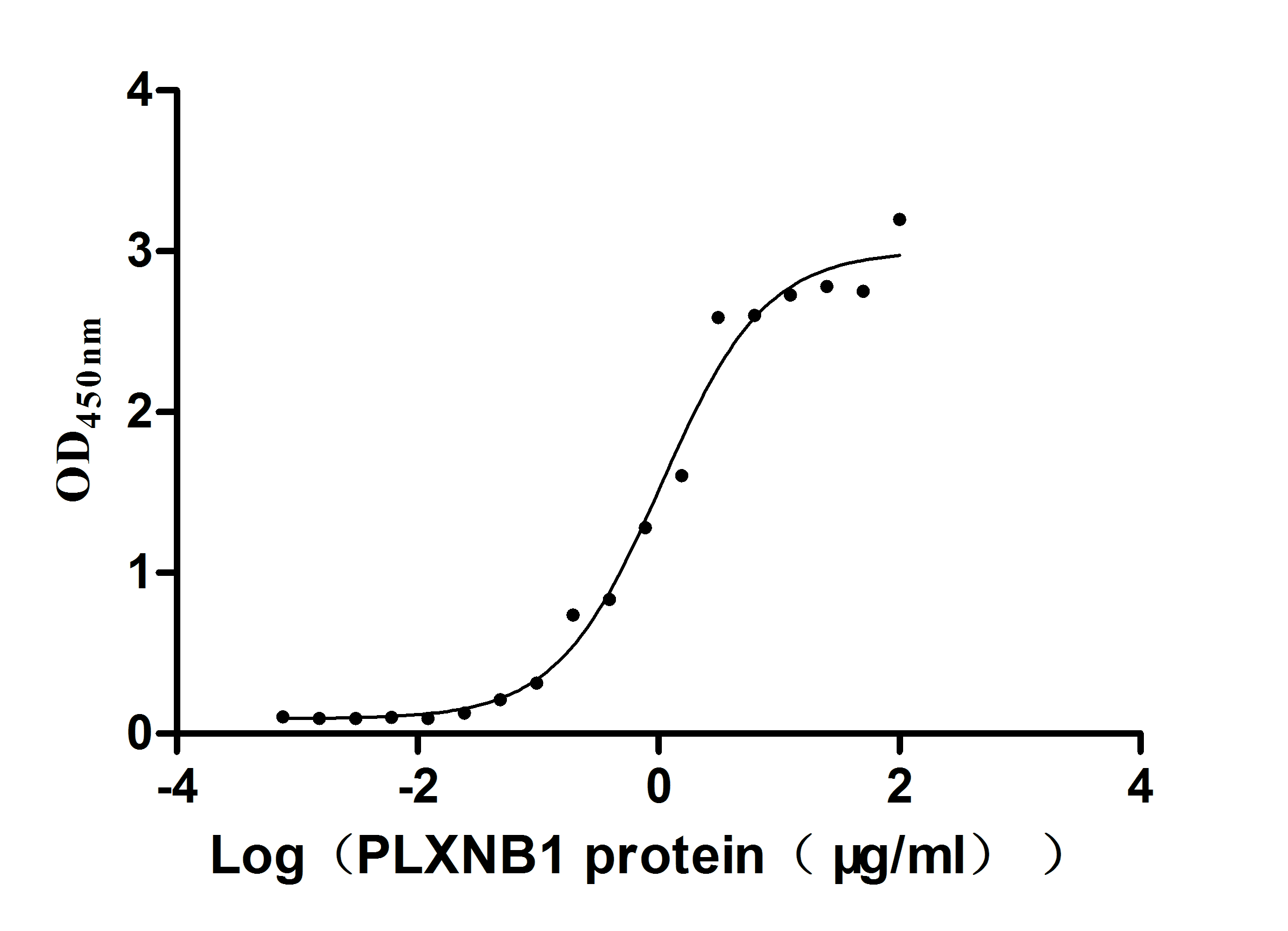Recombinant Human E3 ubiquitin-protein ligase RNF8 (RNF8)
In Stock-
中文名称:人RNF8重组蛋白
-
货号:CSB-EP019898HU
-
规格:¥1536
-
图片:
-
其他:
产品详情
-
纯度:Greater than 85% as determined by SDS-PAGE.
-
基因名:RNF8
-
Uniprot No.:
-
别名:C3HC4 type zinc finger protein; E3 ubiquitin protein ligase RNF8; E3 ubiquitin-protein ligase RNF8; FLJ12013; KIAA0646; Ring finger protein (C3HC4 type) 8; RING finger protein 8; Ring finger protein 8; E3 ubiquitin protein ligase; RNF 8; RNF8; RNF8_HUMAN; UBC13/UEV interacting ring finger protein
-
种属:Homo sapiens (Human)
-
蛋白长度:Full Length
-
来源:E.coli
-
分子量:63.0 kDa
-
表达区域:1-485aa
-
氨基酸序列MGEPGFFVTGDRAGGRSWCLRRVGMSAGWLLLEDGCEVTVGRGFGVTYQLVSKICPLMISRNHCVLKQNPEGQWTIMDNKSLNGVWLNRARLEPLRVYSIHQGDYIQLGVPLENKENAEYEYEVTEEDWETIYPCLSPKNDQMIEKNKELRTKRKFSLDELAGPGAEGPSNLKSKINKVSCESGQPVKSQGKGEVASTPSDNLDPKLTALEPSKTTGAPIYPGFPKVTEVHHEQKASNSSASQRSLQMFKVTMSRILRLKIQMQEKHEAVMNVKKQTQKGNSKKVVQMEQELQDLQSQLCAEQAQQQARVEQLEKTFQEEEQHLQGLEIAQGEKDLKQQLAQALQEHWALMEELNRSKKDFEAIIQAKNKELEQTKEEKEKMQAQKEEVLSHMNDVLENELQCIICSEYFIEAVTLNCAHSFCSYCINEWMKRKIECPICRKDIKSKTYSLVLDNCINKMVNNLSSEVKERRIVLIRERKAKRLF
Note: The complete sequence including tag sequence, target protein sequence and linker sequence could be provided upon request. -
蛋白标签:N-terminal 10xHis-tagged and C-terminal Myc-tagged
-
产品提供形式:Liquid or Lyophilized powder
Note: We will preferentially ship the format that we have in stock, however, if you have any special requirement for the format, please remark your requirement when placing the order, we will prepare according to your demand. -
缓冲液:If the delivery form is liquid, the default storage buffer is Tris/PBS-based buffer, 5%-50% glycerol. If the delivery form is lyophilized powder, the buffer before lyophilization is Tris/PBS-based buffer, 6% Trehalose.
-
复溶:We recommend that this vial be briefly centrifuged prior to opening to bring the contents to the bottom. Please reconstitute protein in deionized sterile water to a concentration of 0.1-1.0 mg/mL.We recommend to add 5-50% of glycerol (final concentration) and aliquot for long-term storage at -20°C/-80°C. Our default final concentration of glycerol is 50%. Customers could use it as reference.
-
储存条件:Store at -20°C/-80°C upon receipt, aliquoting is necessary for mutiple use. Avoid repeated freeze-thaw cycles.
-
保质期:The shelf life is related to many factors, storage state, buffer ingredients, storage temperature and the stability of the protein itself.
Generally, the shelf life of liquid form is 6 months at -20°C/-80°C. The shelf life of lyophilized form is 12 months at -20°C/-80°C. -
货期:3-7 business days
-
注意事项:Repeated freezing and thawing is not recommended. Store working aliquots at 4°C for up to one week.
-
Datasheet & COA:Please contact us to get it.
相关产品
靶点详情
-
功能:E3 ubiquitin-protein ligase that plays a key role in DNA damage signaling via 2 distinct roles: by mediating the 'Lys-63'-linked ubiquitination of histones H2A and H2AX and promoting the recruitment of DNA repair proteins at double-strand breaks (DSBs) sites, and by catalyzing 'Lys-48'-linked ubiquitination to remove target proteins from DNA damage sites. Following DNA DSBs, it is recruited to the sites of damage by ATM-phosphorylated MDC1 and catalyzes the 'Lys-63'-linked ubiquitination of histones H2A and H2AX, thereby promoting the formation of TP53BP1 and BRCA1 ionizing radiation-induced foci (IRIF). Also controls the recruitment of UIMC1-BRCC3 (RAP80-BRCC36) and PAXIP1/PTIP to DNA damage sites. Also recruited at DNA interstrand cross-links (ICLs) sites and catalyzes 'Lys-63'-linked ubiquitination of histones H2A and H2AX, leading to recruitment of FAAP20/C1orf86 and Fanconi anemia (FA) complex, followed by interstrand cross-link repair. H2A ubiquitination also mediates the ATM-dependent transcriptional silencing at regions flanking DSBs in cis, a mechanism to avoid collision between transcription and repair intermediates. Promotes the formation of 'Lys-63'-linked polyubiquitin chains via interactions with the specific ubiquitin-conjugating UBE2N/UBC13 and ubiquitinates non-histone substrates such as PCNA. Substrates that are polyubiquitinated at 'Lys-63' are usually not targeted for degradation. Also catalyzes the formation of 'Lys-48'-linked polyubiquitin chains via interaction with the ubiquitin-conjugating UBE2L6/UBCH8, leading to degradation of substrate proteins such as CHEK2, JMJD2A/KDM4A and KU80/XRCC5: it is still unclear how the preference toward 'Lys-48'- versus 'Lys-63'-linked ubiquitination is regulated but it could be due to RNF8 ability to interact with specific E2 specific ligases. For instance, interaction with phosphorylated HERC2 promotes the association between RNF8 and UBE2N/UBC13 and favors the specific formation of 'Lys-63'-linked ubiquitin chains. Promotes non-homologous end joining (NHEJ) by promoting the 'Lys-48'-linked ubiquitination and degradation the of KU80/XRCC5. Following DNA damage, mediates the ubiquitination and degradation of JMJD2A/KDM4A in collaboration with RNF168, leading to unmask H4K20me2 mark and promote the recruitment of TP53BP1 at DNA damage sites. Following DNA damage, mediates the ubiquitination and degradation of POLD4/p12, a subunit of DNA polymerase delta. In the absence of POLD4, DNA polymerase delta complex exhibits higher proofreading activity. In addition to its function in damage signaling, also plays a role in higher-order chromatin structure by mediating extensive chromatin decondensation. Involved in the activation of ATM by promoting histone H2B ubiquitination, which indirectly triggers histone H4 'Lys-16' acetylation (H4K16ac), establishing a chromatin environment that promotes efficient activation of ATM kinase. Required in the testis, where it plays a role in the replacement of histones during spermatogenesis. At uncapped telomeres, promotes the joining of deprotected chromosome ends by inducing H2A ubiquitination and TP53BP1 recruitment, suggesting that it may enhance cancer development by aggravating telomere-induced genome instability in case of telomeric crisis. Promotes the assembly of RAD51 at DNA DSBs in the absence of BRCA1 and TP53BP1 Also involved in class switch recombination in immune system, via its role in regulation of DSBs repair. May be required for proper exit from mitosis after spindle checkpoint activation and may regulate cytokinesis. May play a role in the regulation of RXRA-mediated transcriptional activity. Not involved in RXRA ubiquitination by UBE2E2.
-
基因功能参考文献:
- study describes RNF8 as a co-activator of ERalpha increases ERalpha stability via post-transcriptional pathway, and provides a new insight into mechanisms for RNF8 to promote cell growth of ERalpha-positive breast cancer. PMID: 28216286
- the present study described the noncovalent interaction between the E3 ubiquitin ligase RNF8 and SUMO2/3 and indicated that this interaction promoted DSB repair. PMID: 28983621
- Data report that RNF8 is overexpressed in highly metastatic breast cell lines and its overexpression can induce EMT in breast cancer cells. Furthermore, RNF8 is aberrantly expressed in invasive breast cancer and positively correlates with lymph node metastasis. PMID: 27259701
- The present findings indicate that WRAP53beta and RNF8 are rate-limiting factors in the repair of DNA double-strand breaks and raise the possibility that upregulation of WRAP53beta may contribute to genomic stability in and survival of cancer cells. PMID: 27310875
- The study identifies a previously unrecognized role for RNF8 in the negative regulation of NF-kappaB activation by targeting and deactivating the IKK complex. PMID: 28499869
- the role of RNF8-mediated histone H3 polyubiquitylation in the regulation of histone H3 stability and chromatin modification, is reported. PMID: 28507061
- RNF8- and Ube2S-dependent Lys11-linkage ubiquitin conjugation plays an important role in regulating DNA damage-induced transcriptional silencing, distinct from the role of Lys63-linkage ubiquitin in the recruitment of DNA damage repair proteins 53BP1 and BRCA1. PMID: 28525740
- RNF8-promoted Twist ubiquitination is required for Twist localization to the nucleus for subsequent epithelial-mesenchymal transition and cancer stem cells functions, thereby conferring chemoresistance. PMID: 27618486
- The attenuated DNA damage localization of RNF8 resulting from INT6 depletion could be attributed to the defective retention of ATM. PMID: 27550454
- High RNF8 expression is associated with bladder cancer. PMID: 26788910
- The interaction of MDC1 with RNF8, but not with ATM requires WRAP53beta, suggesting that WRAP53beta facilitates the former interaction without altering phosphorylation of MDC1 by ATM. PMID: 26734725
- define a novel function for ATDC in the RNF8-mediated DNA damage response and implicate RNF8 binding as a key determinant of the radioprotective function of ATDC PMID: 26381412
- Results indicate that RNF8 recruits and ubiquitinates many factors to repair DNA damage thereby conferring radioresistance to nasopharyngeal cancer cells. PMID: 25955491
- Significantly restored tolerance of RAD18-/- and RNF8-/- cells to camptothecin and olaparib without affecting Rad51 focus formation. PMID: 25417706
- considered potential associations of 14 single nucleotide polymorphisms (SNPs) in RNF8 and BRDT genes in Chinese patients with non-obstructive azoospermia PMID: 25374327
- our results indicate that down-regulation of RNF8 mediated by miR-214 impedes DNA damage response to induce chromosomal instability in ovarian cancers, which may facilitate the understanding of mechanisms underlying chromosomal instability. PMID: 25483088
- Finding that RNF8 is less abundant than RNF168 identifies RNF8 as a rate-limiting determinant of focal repair complex assembly. PMID: 25304081
- Depletion of RNF8 or RNF168 blocks the degradation of diffusely localized nuclear 53BP1. PMID: 25337968
- PALB2 localization depends on the presence of MDC1, RNF8, RAP80 and Abraxas upstream of BRCA1. PMID: 23038782
- RNF8 maintains genome stability through independent, yet analogous, nuclear and cytoplasmic ubiquitylation activities PMID: 23442799
- findings implicate USP44 in negative regulation of the RNF8/RNF168 pathway PMID: 23615962
- The PARP1-dependent localization of BAL1-BBAP functionally limits both early and delayed DNA damage and enhances cellular viability independent of ATM, MDC1, and RNF8. PMID: 23230272
- The identification of RNF8 allows new insights into the integration of the control of p12 degradation by different DNA damage signaling pathways. PMID: 23233665
- Nbs1 is one important target of RNF8 to regulate DNA DSB repair. PMID: 23115235
- Data indicate that RNF8-dependent chromatin ubiquitination is required for RAD51 assembly in BRCA1/53BP1-depleted cells. PMID: 22865450
- RNF8 may play a role in protein synthesis, possibly linking the nucleolar exit of this factor to the attenuation of protein synthesis in response to DNA damage. PMID: 22814251
- Data indicate that RNF8 and FAAP20 (C1orf86) are needed for efficient Fanconi anemia group D2 protein FANCD2 monoubiquitination. PMID: 22705371
- A new mechanism of chromatin remodelling-assisted ubiquitylation was shown, which involves cooperation between CHD4 and RNF8 to create a local chromatin environment permissive to the assembly of checkpoint and repair machineries at DNA lesions. PMID: 22531782
- The s propose that the RNF8-dependent degradation of JMJD2A regulates DNA repair by controlling the recruitment of 53BP1 at DNA damage sites. PMID: 22373579
- By mimicking a cellular phosphosite, ICP0 binds RNF8 via the RNF8 forkhead associated (FHA) domain. Phosphorylation of ICP0 T67 by CK1 recruits RNF8 for degradation and thereby promotes viral transcription PMID: 22405594
- Data show that depletion of RNF8, as well as of the E3 ligase RNF168, reduces telomere-induced genome instability. PMID: 21857671
- The viral protein ICP0 targets RNF8 and RNF168 for degradation, thereby preventing the deposition of repressive ubiquitin marks and counteracting this repair protein recruitment. PMID: 21698222
- the differential requirement for the ubiquitin ligase RNF8 in facilitating repair of replication stress-associated DNA damage PMID: 21558560
- The E3 Ubiquitin ligases, RNF8 and RNF168, are recruited to DNA damage foci in late mitosis, presumably to prime sites for the DNA damage response, 53BP1, recruitment in early G1. PMID: 21412056
- These results suggest that RNF8 is downregulated in many cancer cells and inversely correlated with Plk1. PMID: 21635870
- Phosphorylated NPM1 may interact with RNF8-dependent ubiquitin conjugates at sites of DNA damage. PMID: 20713529
- Data identify RNF8 and RNF168, cellular histone ubiquitin ligases responsible for anchoring repair factors at sites of damage, as new targets for ICP0-mediated degradation. PMID: 20075863
- Ubiquitin ligase does not protect cells from Nutlin-3-mediated apoptosis, indicating that RNF8 does not regulate 53BP1 protein. PMID: 20080757
- Data show that the ATM signalling mediator proteins MDC1, RNF8, RNF168 and 53BP1 are also required for heterochromatic DSB repair. PMID: 20081839
- results suggest a novel function of RNF8 as a regulator of RXR alpha-mediated transcriptional activity through interaction between their respective N-terminal regions PMID: 14981089
- Regulates the rate of exit from mitosis and cytokinesis. PMID: 17724460
- RNF8 ubiquitylates histones at DNA double-strand breaks and promotes assembly of repair proteins. PMID: 18001824
- RNF8 is a novel DNA-damage-responsive protein that integrates protein phosphorylation and ubiquitylation signaling and plays a critical role in the cellular response to genotoxic stress. PMID: 18001825
- results demonstrate how the DNA-damage response is orchestrated by ATM-dependent phosphorylation of MDC1 and RNF8-mediated ubiquitination PMID: 18006705
- RNF8 is the human orthologue of the yeast protein Dma1p PMID: 18171988
- RNF8 ubiquitylation pathways are essential for 53BP1 regulation in response to ionizing radiation, whereas RNF8-independent pathways contribute to 53BP1 targeting and phosphorylation in response to UV light and other forms of DNA replication stress PMID: 18337245
- Depletion of RAP80 or RNF8 impairs the translocation of BRCA1 to DNA damage sites and results in defective cell cycle checkpoint control and DSB repair PMID: 18550271
- RNF8 readily mono-ubiquitinates PCNA in the presence of UbcH5c, and polyubiquitinates PCNA in the added presence of Ubc13/Uev1a. PMID: 18948756
- subset of PTIP.PA1 complex is recruited to DNA damage sites via the RNF8-dependent pathway and is required for cell survival in response to DNA damage. PMID: 19124460
- Nucleotide excision repair-induced H2A ubiquitination is dependent on MDC1 and RNF8 and reveals a universal DNA damage response. PMID: 19797077
显示更多
收起更多
-
亚细胞定位:Nucleus. Cytoplasm. Midbody. Chromosome, telomere.
-
蛋白家族:RNF8 family
-
组织特异性:Ubiquitous. In fetal tissues, highest expression in brain, thymus and liver. In adult tissues, highest levels in brain and testis, lowest levels in peripheral blood cells.
-
数据库链接:
HGNC: 10071
OMIM: 611685
KEGG: hsa:9025
STRING: 9606.ENSP00000362578
UniGene: Hs.485278
Most popular with customers
-
Recombinant Human Lymphotoxin-alpha (LTA) (Active)
Express system: Mammalian cell
Species: Homo sapiens (Human)
-
Recombinant Human Plexin-B1 (PLXNB1), partial (Active)
Express system: Mammalian cell
Species: Homo sapiens (Human)
-
Recombinant Rat Intestinal-type alkaline phosphatase 1 (Alpi) (Active)
Express system: Mammalian cell
Species: Rattus norvegicus (Rat)
-
Recombinant Rat Microtubule-associated protein tau (Mapt) (Active)
Express system: Mammalian cell
Species: Rattus norvegicus (Rat)
-
Recombinant Human Cannabinoid receptor 1 (CNR1)-VLPs (Active)
Express system: Mammalian cell
Species: Homo sapiens (Human)
-
Express system: Mammalian cell
Species: Homo sapiens (Human)
-
Recombinant Human Zymogen granule protein 16 homolog B (ZG16B) (Active)
Express system: Mammalian cell
Species: Homo sapiens (Human)
-
Recombinant Macaca fascicularis lymphocyte antigen 6 family member G6D (LY6G6D) (Active)
Express system: Yeast
Species: Macaca fascicularis (Crab-eating macaque) (Cynomolgus monkey)





















